Design Talk with Alex Udin: Phantom F18 in Detail
Top photo Fabian Haiek , all rest Alex Udin


 Full insight design interview with Alex Udin made here in Buenos Aires some weeks ago after LA Worlds. Purely design talk, on the rule mess I will just repeat that the class needs to act on time to protect the sailors, and the builders need to take full responsibility for what they deliver. Had a long talk with Pablo Soldano in LA too about this, and he has the same view for an inhouse certificate, Pablo also agreed we need a more professional managed class to adapt to current times, good will is not enough anymore. Pablo’s interview is in his inbox to be approved.
Full insight design interview with Alex Udin made here in Buenos Aires some weeks ago after LA Worlds. Purely design talk, on the rule mess I will just repeat that the class needs to act on time to protect the sailors, and the builders need to take full responsibility for what they deliver. Had a long talk with Pablo Soldano in LA too about this, and he has the same view for an inhouse certificate, Pablo also agreed we need a more professional managed class to adapt to current times, good will is not enough anymore. Pablo’s interview is in his inbox to be approved.
On Udin you can hate or love this guy, but what you can´t deny is that some tough work is being involved on his projects, and I think is good to have someone pushing the limits, as it force the rest to keep the pace and also it is a great ingredient for one of the best assets of the F18, different brands racing together in a leveled field.
So those interested in design talks grab your cup of coffee , as I’ve been told many do every morning and enjoy some juicy detailed insight on the birth and full cycle process of the Phantom F18.
—————————-
CSN – How do you feel now after grabbing with your team a 2nd title? You were quite nervous at LA …
Alex Udin: Amazing, awesome! We had a challenging project for the last 24 months as we launched the Phantom nearly 2 years ago, it was not an easy project as we started from scratch as boat builders.
I had some idea of the windsurfing industry , not bigger boats , but fortunately we have a great team with Martin Fischer as the designer.
– You established that working relation with Martin for the Wildcat right?
We started working together since 2010 for the Erquy F18 campaign when we chose the Wildcat. We end winning the title with Olivier & Arnaud and we decided to start a new boat project with him.
– Why?
We were quite happy with the boat but we had several ideas to make the boat better , faster but basically easy to use.
– The Wildcat as I mentioned on the blog several times is the best boat I’ve ever sailed/raced (vice SAmerican Champ with Esteban Blando on it) a performer and a really a sensitive boat, above 17 knots you need to be quite concentrated on the helm. I remember Olivier commenting on having a boat that can perform like the Wildcat but also being able to concentrate in the course racing in high winds, that was your target with the Phantom?
Yes, a racing boat should be fast but easy to use to being able to concentrate on the course.
– Since day one thinking on the F18 I thought of having more error margin…
But you also need a fast boat , as the class is quite competitive right now
– Which areas beyond easy of use or more margin you work on the Phantom? You already had a good rig.
We have a proven rig/sail combo, so we focused on every little detail on the boat, these details can make big differences in the end, we focused first on the hulls, to reduce the drag and also to improve the forward-aft stability of the boat to reduce the pitching but also the nose diving so you can push harder downwind , but also to have the fastest boat upwind as we believe with Olivier that if you lead upwind you probably made 80% of the race.
– That was the main concept Fischer told me on his interview about the Wildcat too
And we added some safety downwind and easy to use, specially on the start
– And how you achieve that? A boat easy to manage on the start?
It is a compromise, we decided to increase a bit the chord of the daggerboards, we went from 18 to 20cm . If you reduce the width of the foil, specially the chord you achieve less drag and more speed , a faster boat in straight line with narrow boards.
So we increased the chord as we think average speed it is not only straight line but also tacking and gybing , more when you need to re lunch the boat after a tack or in the waves or specially in the start when your speed is very low
– More chord gives you a better grip on the start?
Your speed on the start is around 1knot and with wider boards you get less leeway and you can hold better to your position, and that is a big problem cause in that start line it reduces your option for the race, Olivier was complaining that at Erquy he always had to go to the pin.
– And now?
We are happy with the new wider foils and how Olivier can manage his starts.
Also the position of the dagger case is quite important.
– I know you did lots of tests on that and change a few times right?
We made a lot of tests previous the final launch of the boat, almost 12 months before trying to sell any boat. And one of the thing we tried and change was the position of the daggerboard. We made some calculations and on the computer we had better results with a quite forward position just behind the front beam, it was very good in straight line but with several problems , specially tacking & gybing was not good
– Which is then the theoretical concept gain behind moving the daggercase forward?
Well, the main asset is that you can ride with less daggerboard, you can rise them earlier or higher , putting more lift on the rudders and less on the daggers
– And which is the benefit of that?
It means that instead of only having the rudder dragging, you assign more lift and load to it, as you have a certain rudder size you need to maintain, if too small you can control the boat for instance. So the idea is to make also the rudders generating lift in addition to handling, combined with the ability to rise the boards earlier you achieve less drag ratio.
– But it didn´t work that fine at the early stages right?
No, at low speeds and in the start the rudder was stalling
– You had to much load
Yes, too much load , the angle of the rudder on the start was too high so it was stalling, more in the start when you have your weight forward , in the bareaway they were stalling.
– After the theoretical analysis and the testing you decided to move the daggercase backwards
Yes, we move the case s20cm backwards and it totally changed the ability of the boat to tack . We also made some test on gybing boards, with good gains upwind but not downwind, so we decided to leave them straight, but we are going to work in the future more on that.
– What else did you tested?
The rig is quite important , we think is more than 60% of the boat performance, we decided to go with a stiffer mast , specially sideways which is good for the power but is a compromise with the softer masts like the C2s when you get a more forgiving ride . You can pull harder the mainsheet, you don´t need to be release and the rig is like auto adjusting by itself , it is really good. But in choppy conditions when you need the power and healing moment you are losing a little bit of power.
We went to a stiffer mast and adapted the sails accordingly. Stifness of the foils are key too in my opinion and we are also the only production boat with hollow rudders/daggers, made in autoclave making them pretty light, strong and durable. These boards make the boat faster specially in light to medium winds.
– What about the platform stiffness? You are using Cirrus beams right?
The stiffness of the platform is another key factor , yes the beams were designed bi BCM, we are really happy with them , they provide a better connection with the hulls, and you can integrate these beams to the platform lower than any other on the market due to their special design.
For ie, in a round section you can´t integrate more than 50%
– These beams were designed by Manu?
Yes, and the connection reach almost 70% of the beams area attached to the boat giving you an optimal attachment between beam/hull.
– What about the building process?
The entire building process is being made with vacuum, the outer layers, the foam core and final layers, all made with vacuum.
And we made structural analysis with G-Sea design to improve boat framework stiffness and torsion and inflection.
All the structural layout , subdeck and lamination were made by them. the type of fabrics, the unis direction and weight were carefully analyzed also.
We tried to work hard in every detail, and all these little details in the end make a great difference.
– And the famous paint…
The gelcoat doesn´t makes the boat stronger, is dead weight, so we decided to use paint and reinforce the laminate schedule giving us a better use of the class rules in the benefit of the final sailor that will receive a more stiffer and stronger boat.
– Working with Martin Fischer you had access to some serious cfd tests, how was that process?
We did lots of cfd tests for the hull and we did some benchmark tests with the boats we had, and one of the benchmarks was the Capricorn performance upwind, we believe that it was probably the fastest upwind right there with the Wildcat (both Fischer designs) . We also did cfd tests against the other boats , along Olivier and Arnaud feedback on the several on the water tests done.
We measured all the boats also (CSN Note: this is key to having them on the cfd tests) , we worked with the assets and weakness of every boat
– That is what we are doing on the Open Proj right now
It gives you a good reference, so we went with two hull shapes after al these tests , one with a rally flat section in the bottom like the Cirrus , but the results were that upwind and in normal wind conditions doesn´t brings any additional gain and even increase the wetted surface , it has some good assets like increase aft-forward stability downwind creating lift on the front of the hull. We look at the new ideas of the Cirrus and took a compromise solution, in fact all the current boats are very competitive and designs are quite alike, so the gap is not so big.
– I’ve been writing for a while on the blog now, it is not possible to come out with a magic shape that will overperform the others at this stage of the F18 development.
Is not possible, you can´t right now improve by a 10% on hull shape for ie , at the end we had to make a choice between an allrounder, but we chose to go for something little bit more extreme knowing that the safest all round option will be sligthy faster in every condition but we decided to target , based on the statistics we made, the 8-16knots range , optimizing the all the design for that specific range, meaning we wouldn´t had the fastest boat in calm, specially less than 6knots, we knew that our boat is not that efficient there.
This work ended on reducing the drag 4-5%for the mid range, but knowing what we were giving away in -6knots.
– In LA we had almost every single condition, calm with chop, perfect breeze , 20knots and dead calm the final day.
We went for top ten results on the calm, and expecting the breeze to come to take full advantage of the design in 1 to 2 trapeze conditions.
One the the characteristics we look a lot was the prismatic coefficient, that is the difference between the biggest section of the boat, probably in the middle and the slender part of it.
A high prismatic coefficient is the shape of a tree
– So your boat has a pretty high PC, which is the benefit of this feature
You reduce the pitching increasing the fore and aft stability and you reduce the drag at certain speeds but as a compromise you increase the drag at low speeds in calm, specially in the transom.
– I compared the Phantom transom at LA, and it is huge, not as big as the Cirrus but still quite large..
The transom is 3-4 cm wider than the Wildcat , the same for one meter behind the bow , 4-5cm wider there. So the width is exactly the same but we add some volume on the back and front of the boat.
This combined with a pretty straight rocker
– But there you have a compromise between good speed and handling?
Not so much cause we already use big volume and the hulls sits high on the water , the manoeuvrability of the boat is really good.
So the in this area was straight rocker, added volume plus a flatter section in the transom but a more rounded in the middle, this derived from our cfd tests, reducing the wetted surface amidships and flat again in the front.
Another key factor was the freeboard of the boat, we increased by 5-6 cm the height at the back / front beams from other designs .
Finally I took care of the cosmetics aspects of the hulls, the outline, the deck layout and diamond shape of the bow etc.
– The spray rail seems a cosmetic solution also, as is not that deep
Yes, we took it from the Audi A3, and also makes a more easiest way to construct the hull, as a deep rail is tricky to build.
– Which is the cost difference for the Phantom regarding the others?
Probably a 5-10% higher , but the value is there , we wanted to build the best boat at a reasonable price, for sure is not the cheapest one but still on the 5-10% range of any other F18 on the market right now. And to achieved that we had to reduce our margin a shortcut the dealer network which is really expensive , we sell the boats directly
– How do you feel after all this work, and grabbing a 2nd World Title now with a SI 100% equipment?
It has been a tough project , not easy with all that happened with the class and everything , I was like the bad guys and treated as a criminal the last years, really bad times for me , that made me think on the investment I’ve made in the class, more than the money , all the time we have put on the project.
But the team kept focused, I’m really proud of the team, every single guy working with me Oliver, Arnaud that went to the ACup and I’me very happy for him, and this year we had Matthew , a really good guy , one of the best guys I know, a good friend of mine, he comes from the Tornado and with Olivier the formed an excellent team, they respect each other.
Recently Hugh Styles joined the team, funny cause he was one of our main competitor in Erquy, a very good sailor , for sure the best at Erquy, it was really close and lucky for us he had that incident. We trained quite hard in LA as a team, the goal was to get all the team in top places , he was one the fastest boats of the fleet but he had some bad luck again at LA, with one daggerboard going below deck level and damaging the daggercase.
But Hugh is clearly one of the best sailors out here.
– Plans for next year?
After a great success of with the Phantom we now have to continue pushing forward and building more boats.
– Any other dream for the future, like the AC?
Well, yes, winning the Americas Cup is a good dream to have , would really love to be involved…
– You already have the sailors and the designer
AU Yes, but entering the AC is a lot of money and a really tough project to be involved with, and it is a matter of networking and relationship with the AC guys.
– And in the short term? How is Flying Phantom doing?
We’ve been more concentrated on the F18 Phantom project last year, as SI has not many people we will focus on the Flying Phantom more from now on. We have recently started to work together with Franck Cammas and Groupama sailing team in order to set up and develop this new generation of flying boats. It is a great experience to work with them and Martin Fischer which is also involved with Groupama team for a while.
I really believe these types of flying boats could be the future of our sport, it will take a bit of time to get it right but I am sure it might revolutionise beach cats.
-.———-ENDS——
Copyright Catsailingnews.



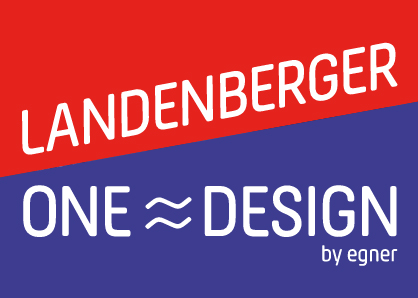
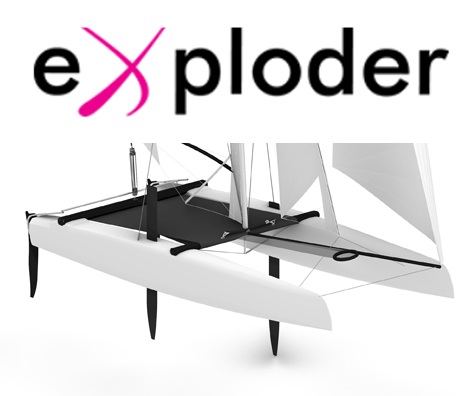
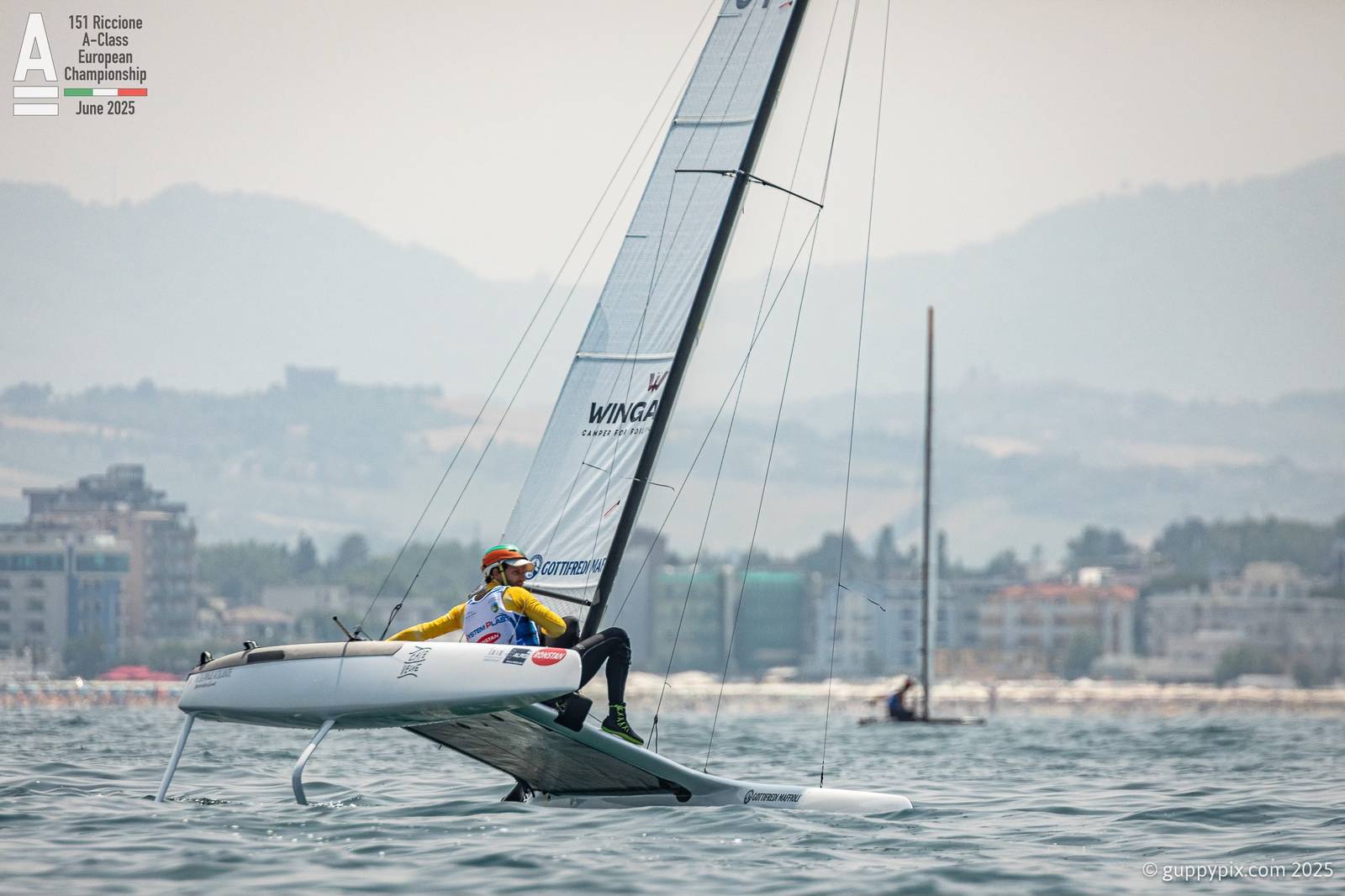
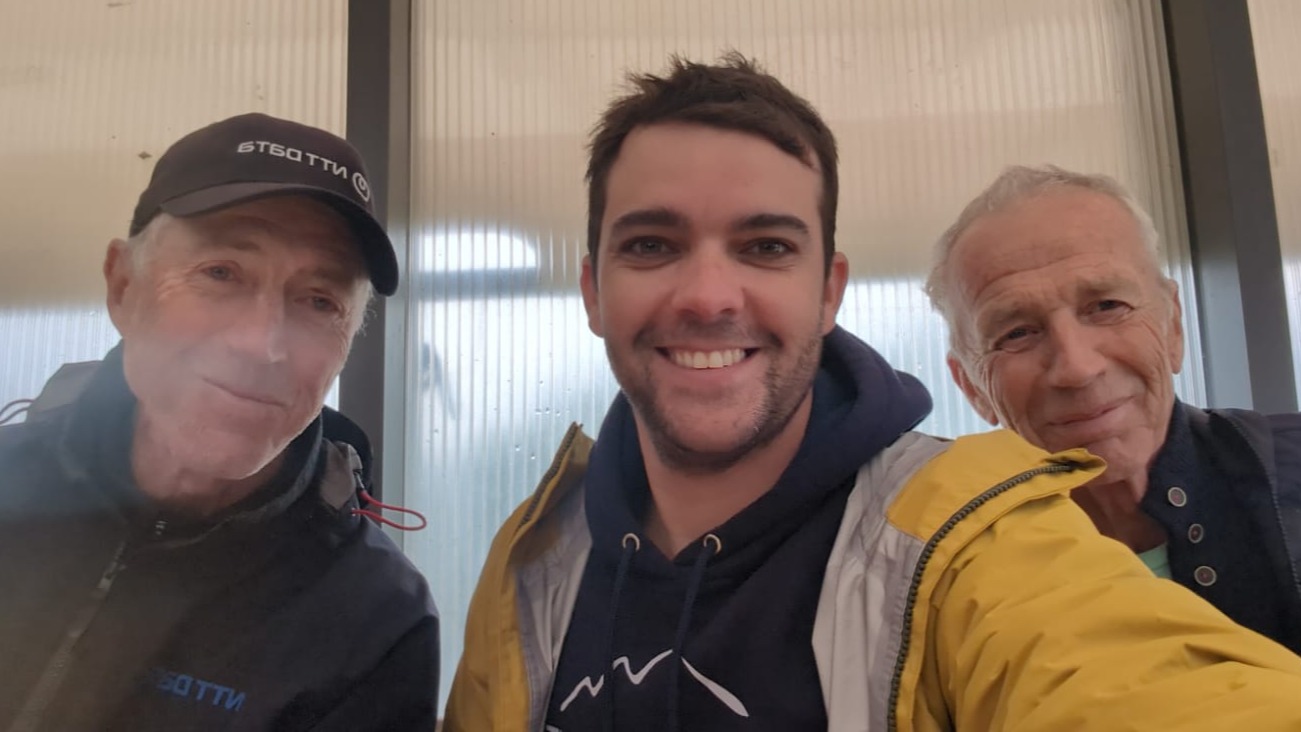
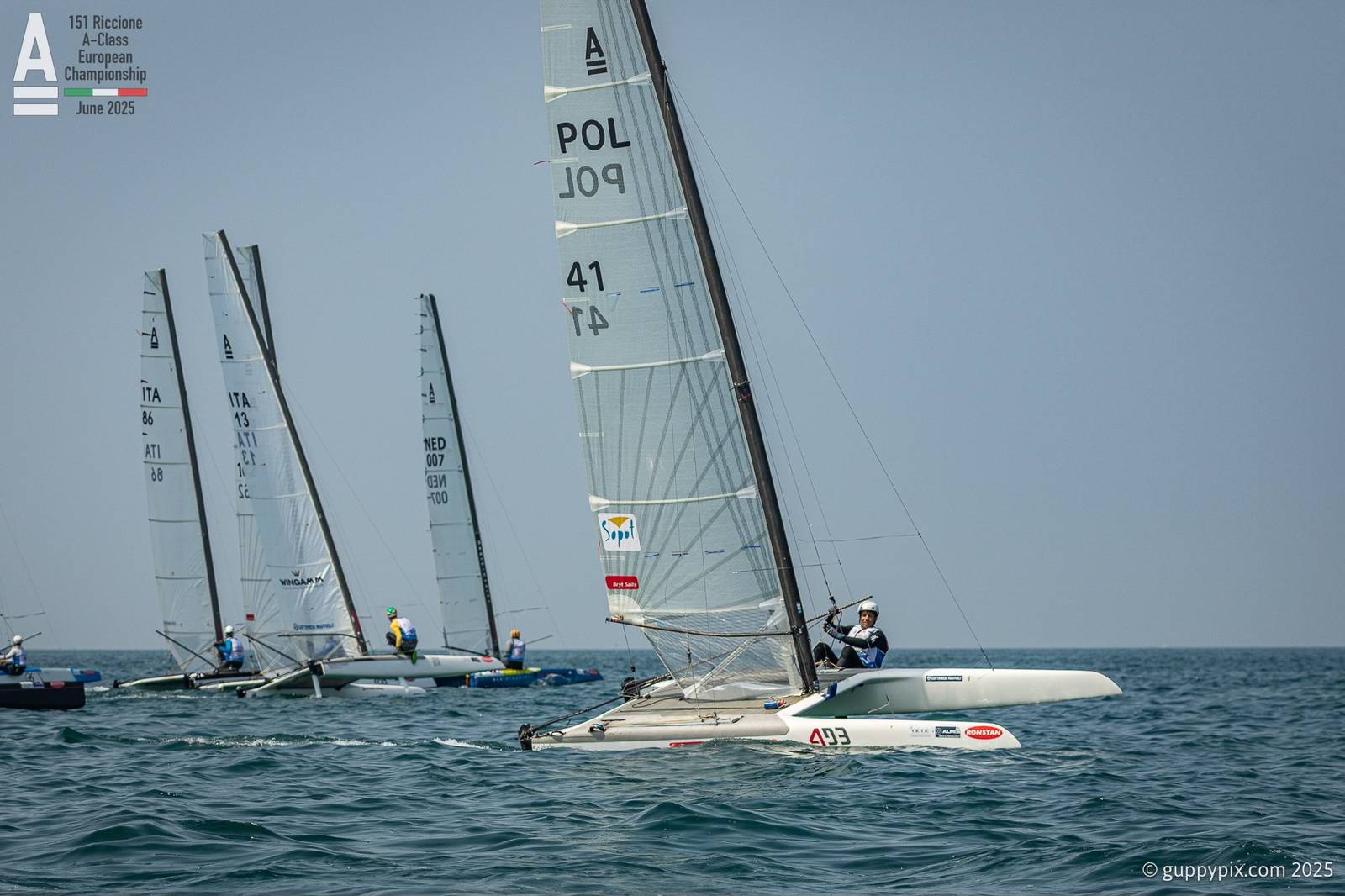
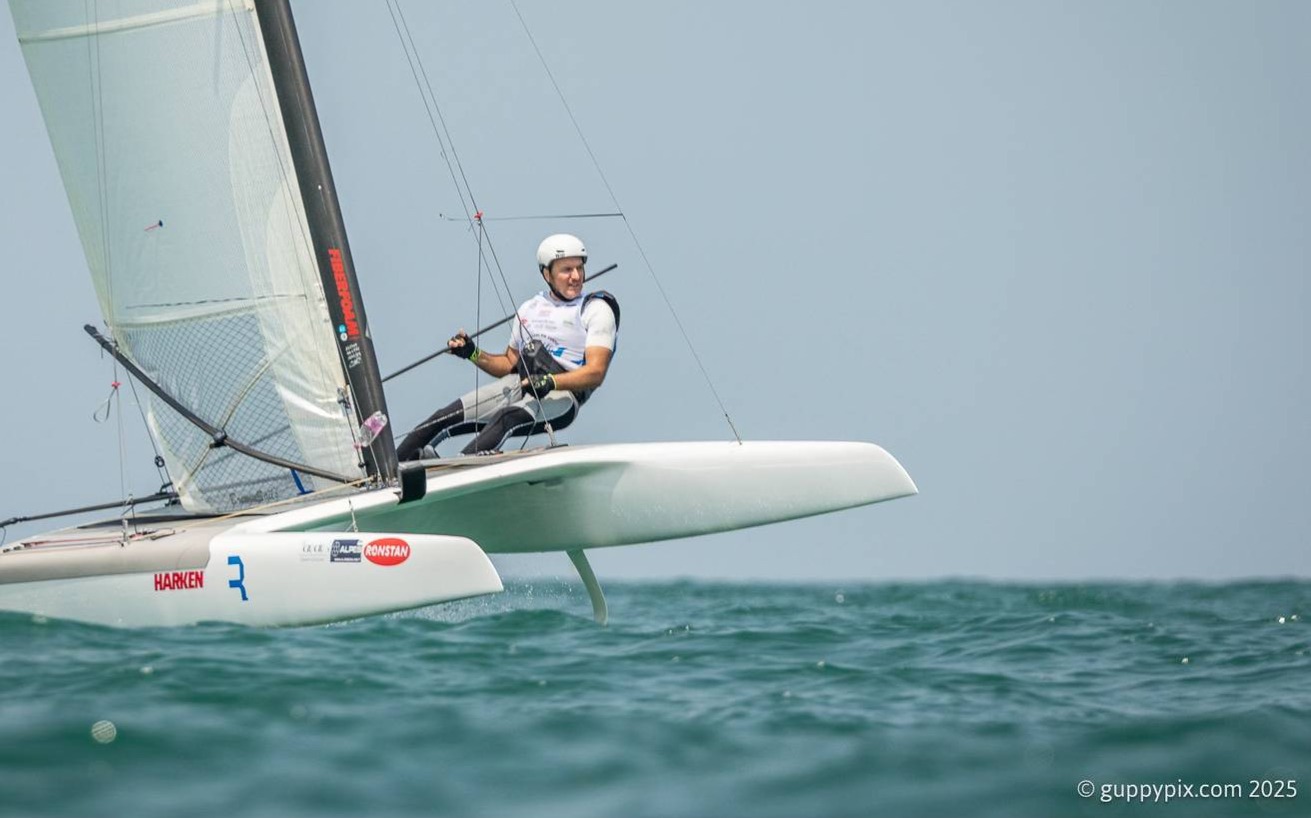
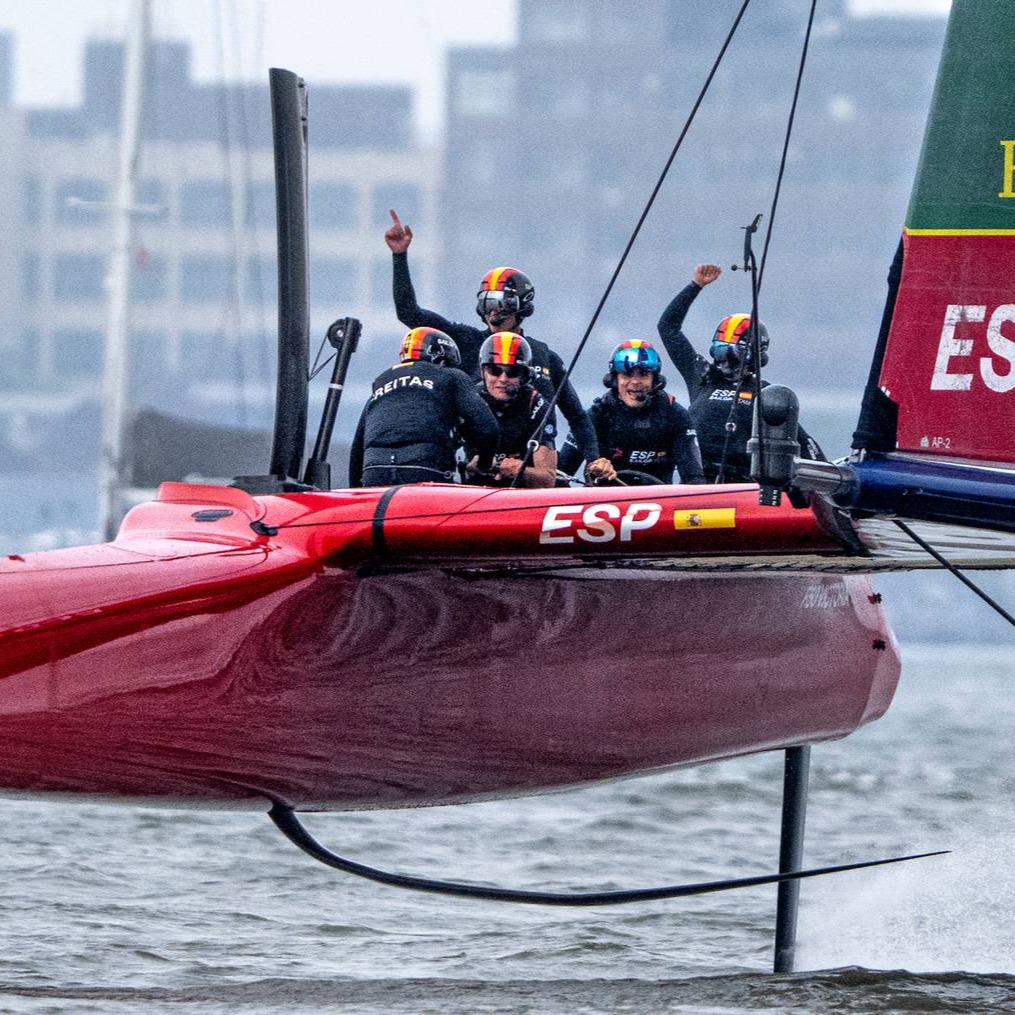
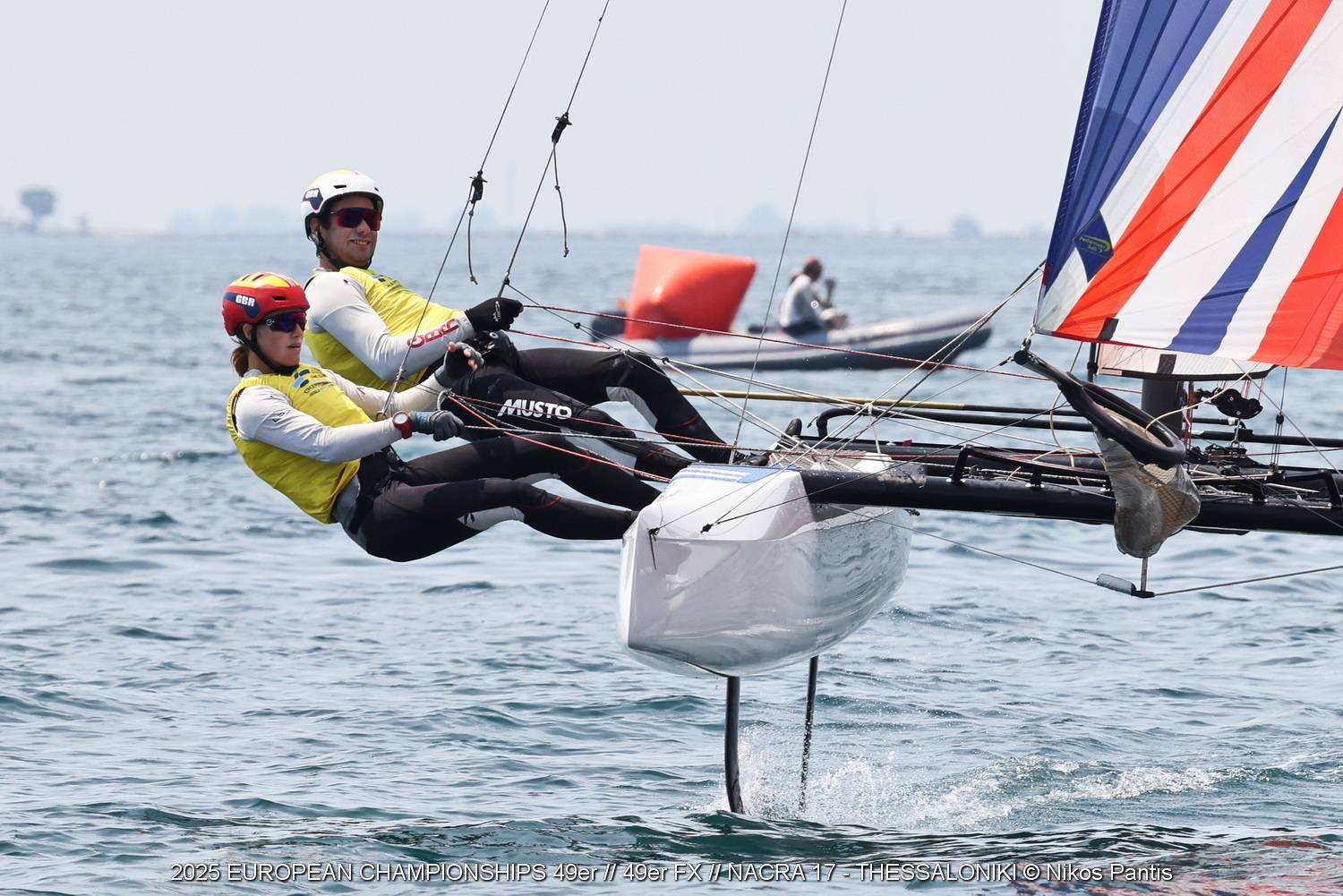
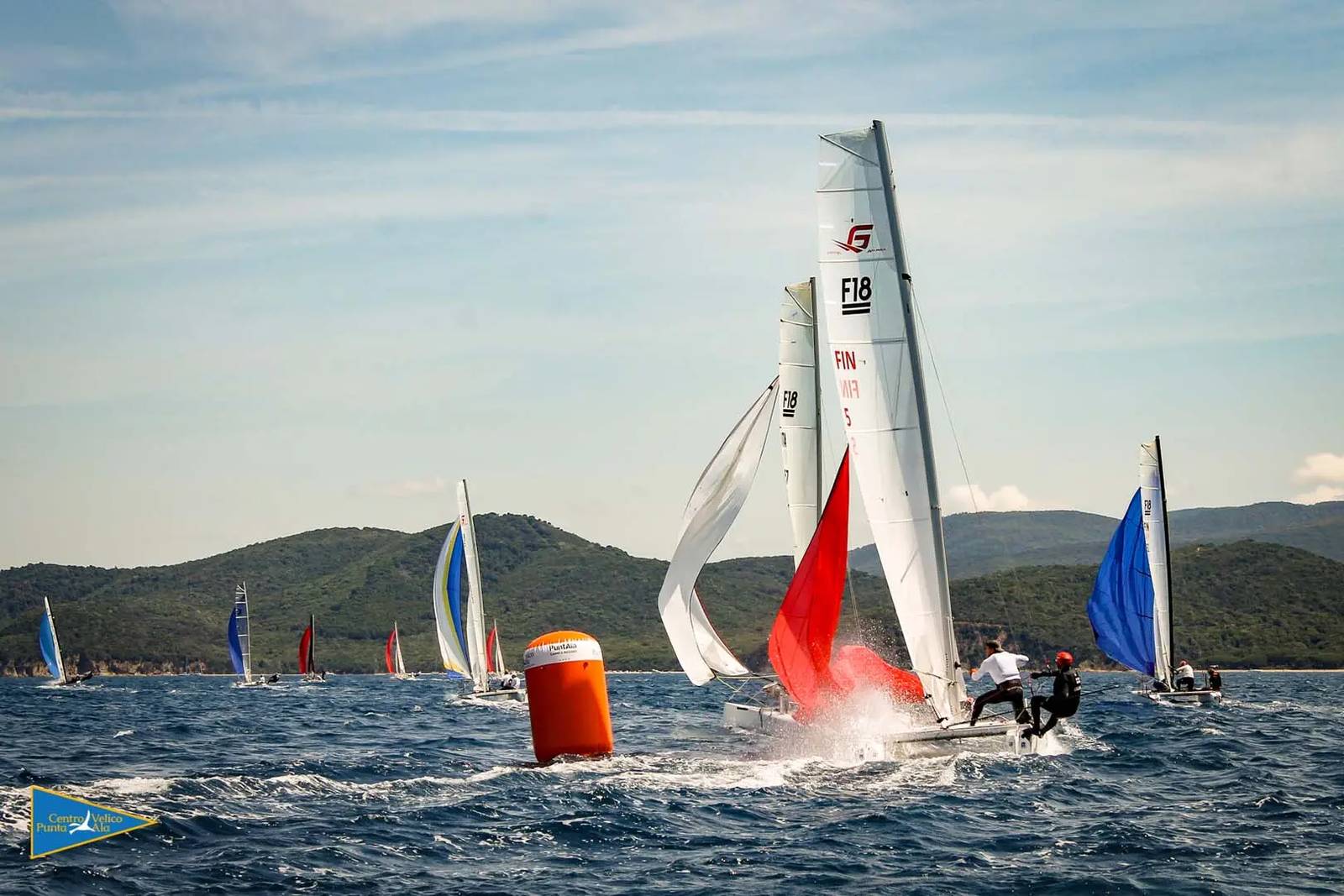
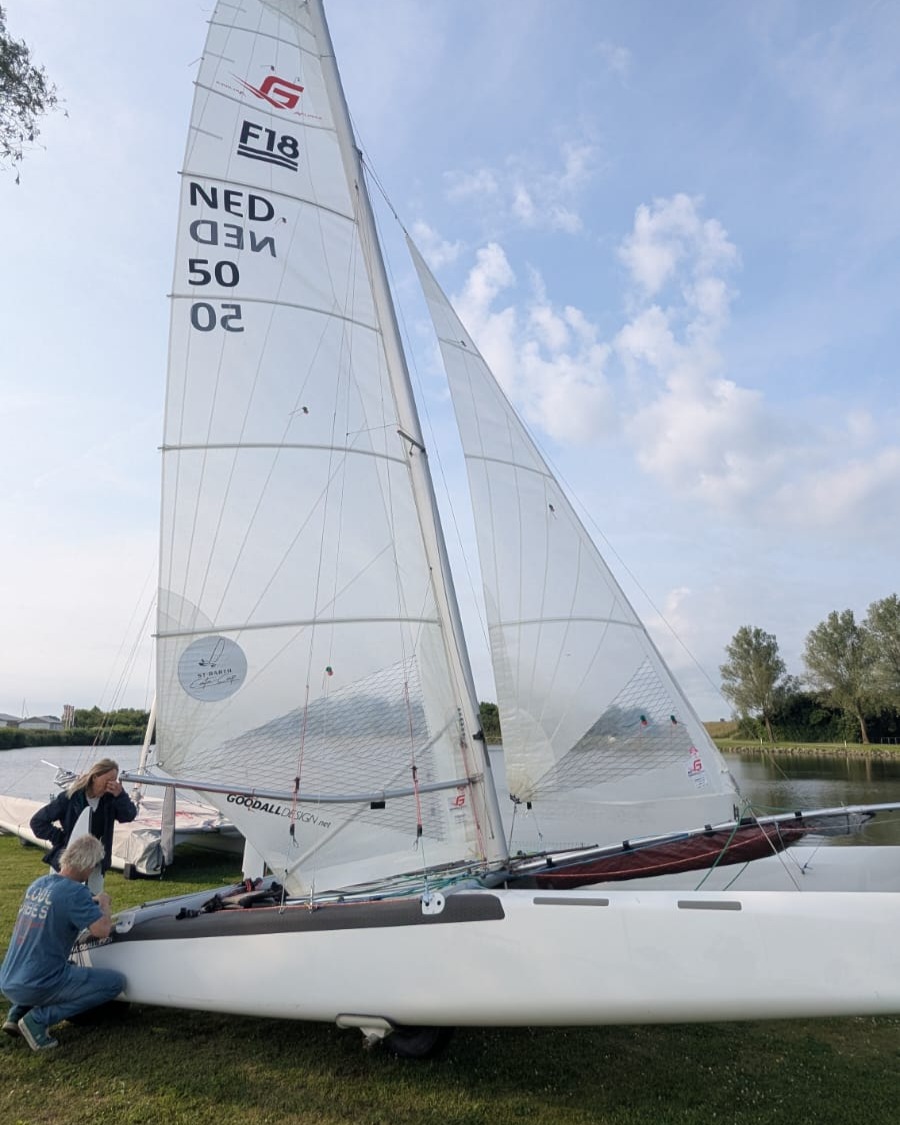
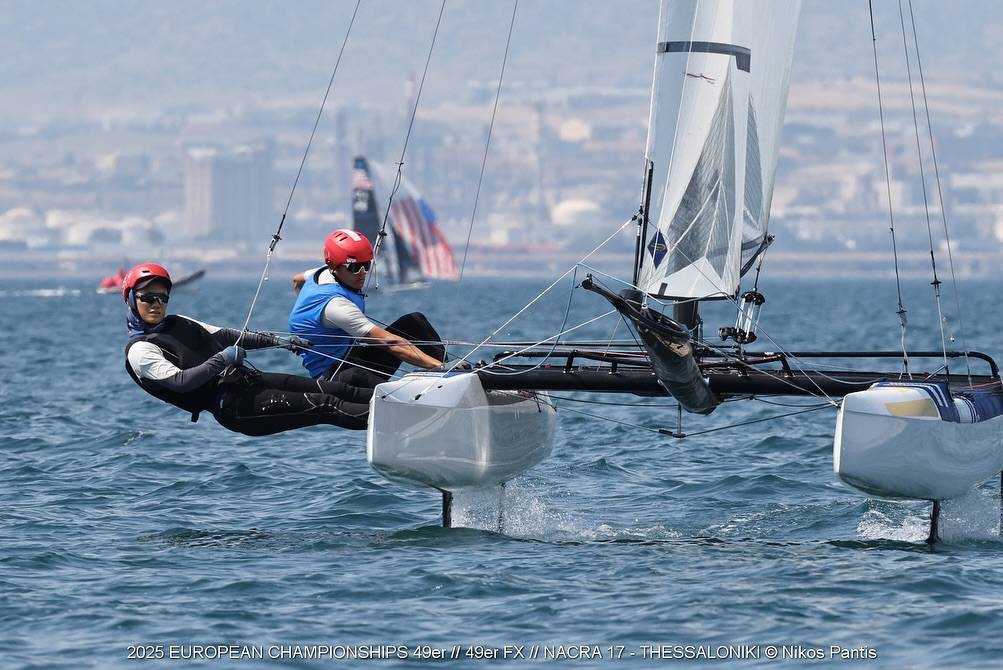



















Good Interveiw, high Cp is mentioned. What is a high Cp?? 0.6 or 0.7? Regards Peter Schwarzel